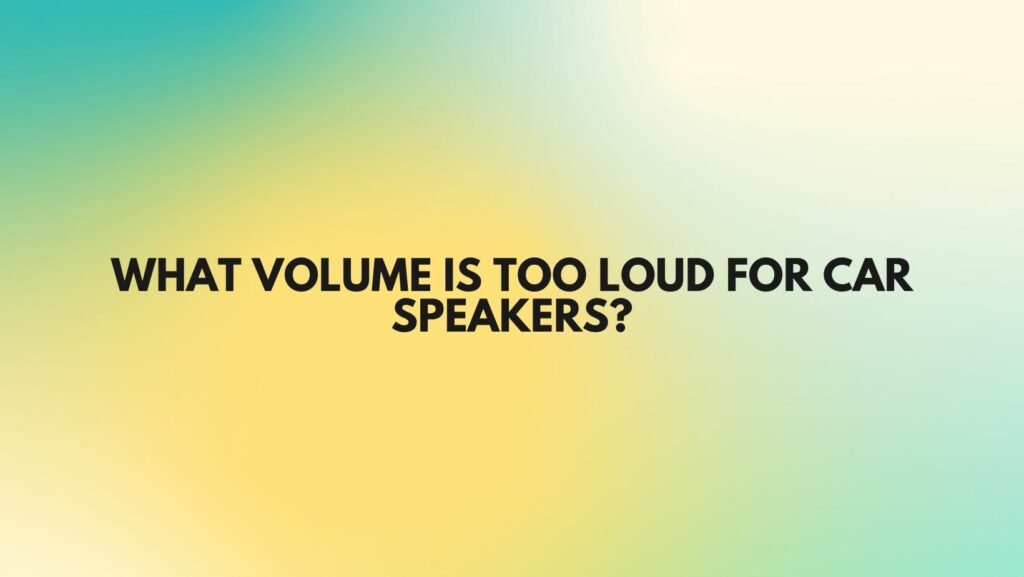Car audio systems have become an integral part of our daily lives, providing entertainment and enjoyment during commutes, road trips, and errands. However, it’s essential to strike a balance between enjoying your music and ensuring the longevity of your car speakers and, most importantly, your hearing health. In this comprehensive article, we’ll explore what volume is too loud for car speakers and the potential consequences of pushing your audio system to its limits.
I. Understanding Speaker Specifications
- Speaker Power Handling To determine what volume is too loud for your car speakers, start by examining their specifications. Every speaker is rated for a specific power handling capacity, usually in watts RMS (Root Mean Square). Exceeding this power rating can lead to distortion and, over time, damage to the speakers.
- Speaker Sensitivity Sensitivity is another crucial specification. A higher sensitivity rating means the speaker can produce more sound with less power. Understanding your speakers’ sensitivity can help you achieve the desired volume with less strain on your audio system.
II. The Dangers of Playing Music Too Loud
- Distortion When you push your car speakers beyond their power handling capacity, distortion occurs. Distorted sound not only sounds unpleasant but can also damage your speakers. Continuous exposure to distorted audio can cause permanent harm to the speakers’ components.
- Hearing Damage Listening to music at excessively high volumes can pose a significant risk to your hearing health. Sound levels above 85 decibels (dB) can cause hearing damage with prolonged exposure. Car audio systems, especially when cranked to the maximum, can easily exceed this level, potentially leading to hearing loss over time.
- Noise Pollution Playing music at extreme volumes can also contribute to noise pollution, disturbing others on the road and in your vicinity. This can lead to safety concerns and social conflicts.
III. Determining a Safe Volume Level
- Avoid Distortion The first rule of thumb is to avoid distortion. If you notice any crackling, buzzing, or muddiness in the sound, it’s a sign that your speakers are struggling to handle the volume. Lower the volume immediately to prevent damage.
- Follow the 60/60 Rule A popular guideline for safe listening is the “60/60 rule.” This means listening to music at no more than 60% of the maximum volume for no longer than 60 minutes at a time. This practice helps protect your hearing while enjoying your music.
- Use Sound Deadening To achieve higher volume levels without distortion, consider investing in sound deadening materials for your car’s interior. This can reduce external noise and improve sound quality at lower volumes.
- Prioritize Sound Quality Rather than simply turning up the volume to its maximum, focus on improving sound quality. Quality audio components, including speakers, amplifiers, and head units, can provide better clarity at lower volumes.
Conclusion
While car audio systems are designed for enjoyment and entertainment, it’s essential to use them responsibly to protect your hearing and preserve the lifespan of your speakers. Understanding your speakers’ specifications, recognizing the dangers of playing music too loud, and following safe listening practices, such as the 60/60 rule, can help you strike the right balance between enjoying your music and maintaining your audio system and hearing health. Ultimately, the question of what volume is too loud for car speakers should be answered with consideration for both your enjoyment and well-being.


